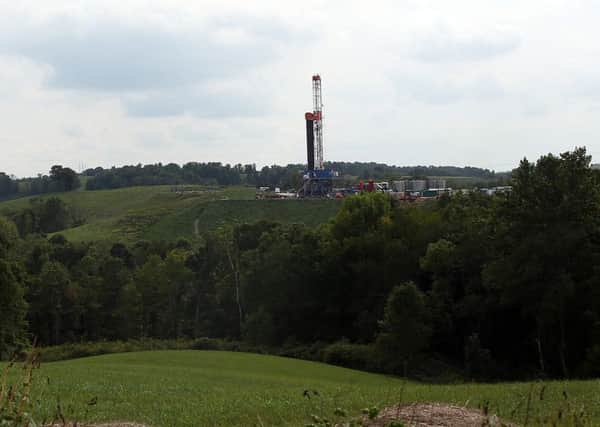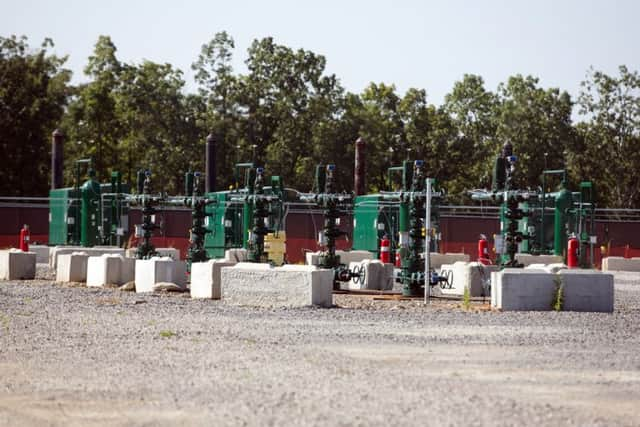Is shale gas about to become the new coal in Notts?


At one time there were 42 pits in the county and more than 40,000 miners - helping to make it one of the most successful coalfields in Europe.
Now more than 20 years after the devastating pit closure programme and 14 months after the last remaining mine shut, the county’s rich energy production heritage could be about to be revived.
Advertisement
Hide AdAdvertisement
Hide AdFor chemical giant INEOS Energy is edging ever closer to submitting five planning applications for vertical core drilling for shale gas in the East Midlands by the end of this year.


And if the company ultimately gets the green light to frack in the county, bosses believe it could potentially boost the local economy by ‘hundreds of millions of pounds’.
INEOS has licences to frack in large areas of Nottinghamshire - including swathes of Mansfield, Ashfield and Bassetlaw - and needs permission from local councils to drill vertical core wells as a first step in a process that could lead to horizontal fracking of those wells.
As reported earlier this month, the firm is looking to undertake seismic surveys across Nottinghamshire to determine whether it will then submit applications for horizontal well fracking,
Advertisement
Hide AdAdvertisement
Hide AdTom Pickering, director of INEOS Upstream, said: “We’re having land owner discussions for the seismic, which are going well. There’s a lot of interest.


“To be honest, in the East Midlands all of these farmers have had their farms for (many) years and have had seismic shock for coal, so they know the process.
“The East Midlands conversation is very good. It’s just actually about keeping everybody lined up in terms of what delays we are experiencing so there are no surprises when we submit applications or what we are doing. It’s just trying to do that stakeholder component.”
News that planning applications are likely to be put in before the end of the year came during a sponsored event in Pennsylvania and Ohio.
Advertisement
Hide AdAdvertisement
Hide AdINOES took a party of journalists from the UK to America as part of a charm offensive to highlight how former mining areas in south west Pennsylvania have been transformed by shale gas.


More than a decade ago, Pittsburgh and south western Pennsylvania were in decline after the demise of traditional local industries such as mining and steel.
Nowadays, the area - which sits on the highly lucrative Marcellus Shale - is booming and boasts new hotels and restaurants, upmarket residential areas and gleaming office blocks.
Patrick Henderson, of Pennsylvania’s largest gas industry trade group, the Marcellus Shale Coalition, says the state is now the second largest producer of natural gas in the country - producing 37 per cent of all shale gas in the US.
Advertisement
Hide AdAdvertisement
Hide AdBut he insists the industry has not compromised safety and the impact on the environment on its journey to prosperity.


He said: “We certainly have a responsibility, a never-ending responsibility, to make sure that we do this right and we hold ourselves to the highest standards and that we hold each other accountable. But at the end of the day I think we have to step back and realise the benefits we have seen from this energy development.
“We seized the opportunity and recognised what was underground and under our feet. We decided as a commonwealth - and I hope as a country - that we’re going to safely develop this resource to the betterment of our people.
“One of the other things we got right in that interim period was that we recognised that we had to update and address our environmental standards.”
Advertisement
Hide AdAdvertisement
Hide AdIn America, landowners have profited because they own the mineral rights under their homes - and while this is not the case in Britain, INEOS has promised to share six per cent of its revenue - four per cent of this would go to homeowners and landowners in the immediate vicinity of a well, and a further two per cent to the wider community.
The company believes its future shale gas business could contribute more than £2.5bn to communities under the scheme.
Mr Pickering added: “We have noticed first-hand how the ‘shale economy’ has revitalised US manufacturing, and our ambition is closely aligned with achieving those objectives in the UK.”
No figure has been put on how Nottinghamshire and the wider East Midlands will benefit financially from fracking.
Advertisement
Hide AdAdvertisement
Hide AdBut Tom Crotty, INEOS director, told the Chad that even a ‘tiny’ area where fracking takes place could yield huge financial rewards - with a typical 36-square-mile block potentially worth around £400m.
He said: “It’s a lot of money. You’re not talking about building a few bus shelters or a little social club, you’re talking about hundreds of millions of pounds.”
INEOS says it will better understand the shale reservoir characteristics of its licenced acreage within two years and within five years have in place a test cluster of wells within a designated area.
“We’ve got two years worth of science, so we’re not going to be extracting any gas (just yet),” said Mr Crotty. “We’ll be doing seismic testing and doing the exploratory drills and hopefully that will help us to identify within the region where the best places to go are.”
Advertisement
Hide AdAdvertisement
Hide AdSo, with coal no more, will shale by the king in the decades to come?
Only time will tell, but if INEOS has its way it most certainly will be.
- Over the coming weeks we will be publishing a series of special Stateside features on fracking - as well as the views from campaigners who are opposed to it.